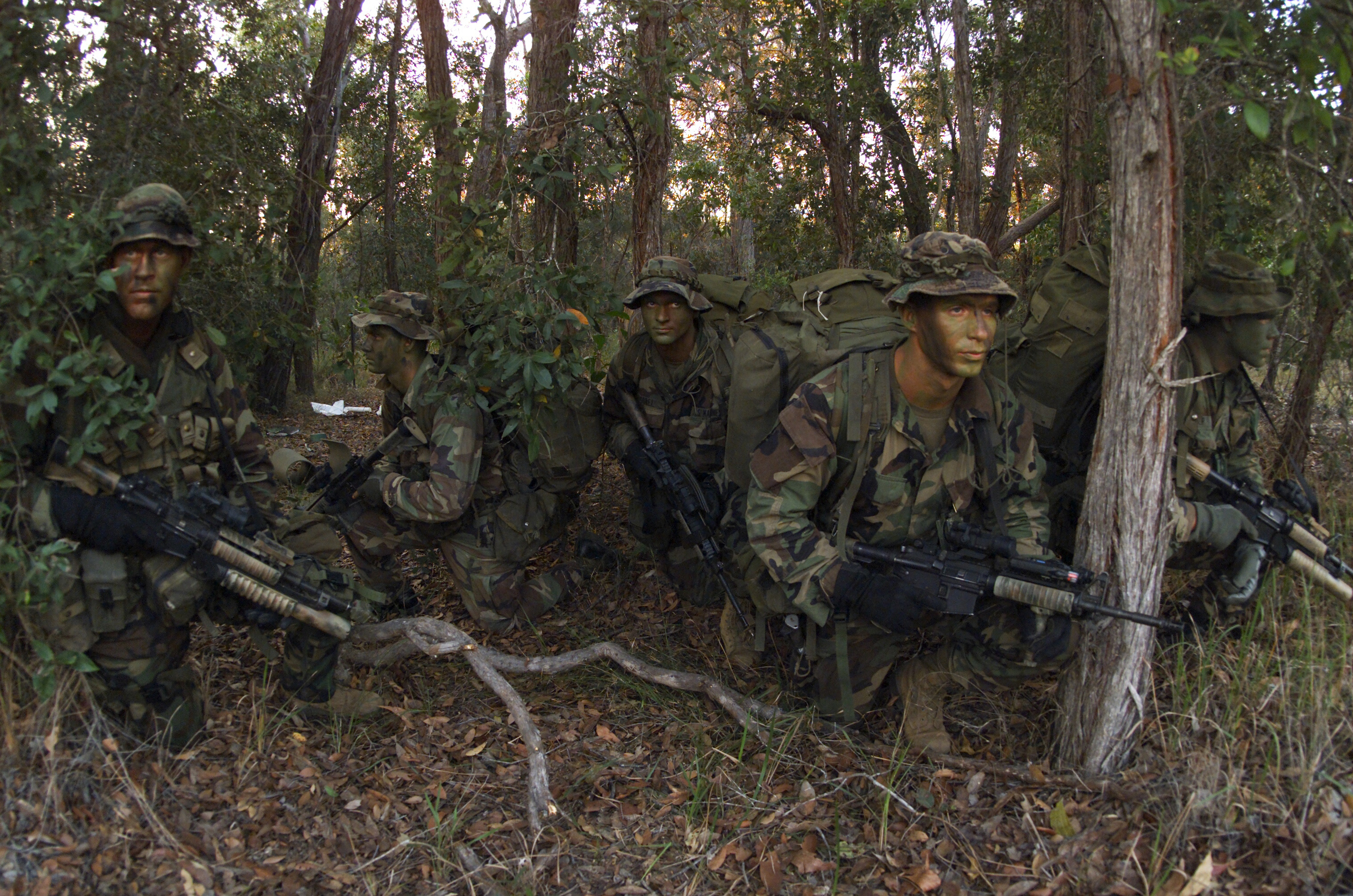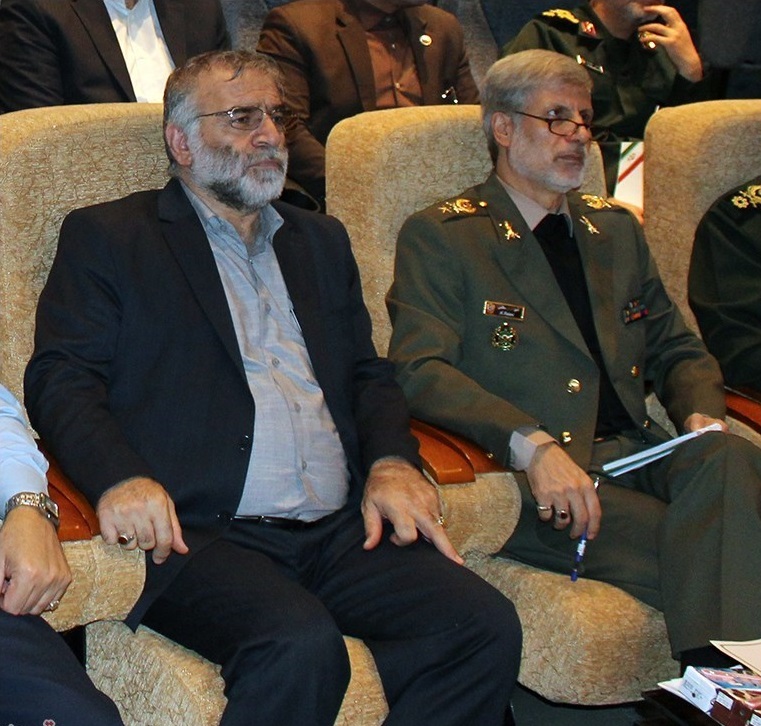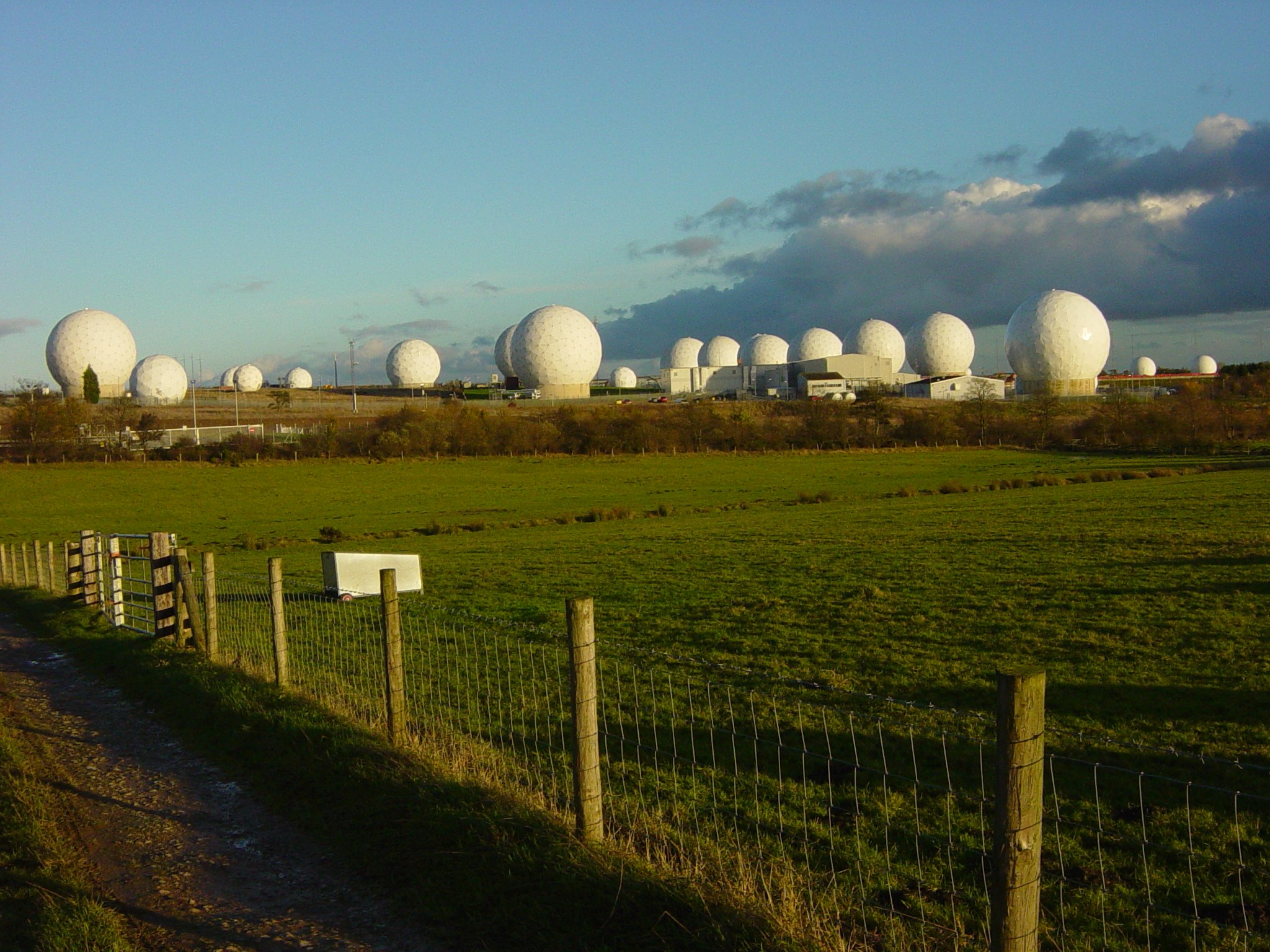|
Mossad Infiltration Of Iranian Nuclear Archive
On 31 January 2018, fewer than two dozen Mossad agents infiltrated a secret warehouse in the Kahrizak District of southern Tehran (the capital city of Iran), and pilfered 100,000 documents, including paper records and computer files, documenting the nuclear weapons work of Iran's AMAD Project between 1999 and 2003. The trove was part of Iran's clandestine nuclear archive, and documented years of work on atomic weapons, warhead designs and production plans. Operation Background The 2015 Joint Comprehensive Plan of Action (JCPOA) deal signed by the Obama administration gave the International Atomic Energy Agency (IAEA) rights to visit declared facilities associated with Iran's nuclear program. In response, beginning in February 2016 the Iranians moved thousands of documents, records, and computer files about building nuclear weapons to 32 safes within a storage warehouse in the Shorabad (''also spelt Shurabad'') industrial district of Tehran, previously unaffiliated with the Iran ... [...More Info...] [...Related Items...] OR: [Wikipedia] [Google] [Baidu] |
Iran Standard Time
Iran Standard Time (IRST) or Iran Time (IT) is the time zone used in Iran. Iran uses a UTC offset UTC+03:30. IRST is defined by the 52.5 degrees east meridian, the same meridian which defines the Iranian calendar and is the official meridian of Iran. Between 2005 and 2008, by decree of President Mahmoud Ahmadinejad, Iran did not observe daylight saving time (DST) (called ''Iran Daylight Time'' or ''IRDT''). It was reintroduced from 21 March 2008. On 21 September 2022, Iran abolished DST and now observes standard time year-round. Daylight Saving Time transitions The dates of DST transitions in Iran were based on the Solar Hijri calendar, the official calendar of Iran, which is in turn based on the March equinox ( Nowruz) as determined by astronomical calculation at the meridian for Iran Standard Time (52.5°E or GMT+3.5h). This resulted in the unique situation wherein the dates of DST transitions didn't fall on the same weekday each year as they do in most other countries. ... [...More Info...] [...Related Items...] OR: [Wikipedia] [Google] [Baidu] |
Yossi Cohen
Yosef "Yossi" Meir Cohen (; born 10 September 1961) is an Israeli intelligence officer. After mandatory service in the Israeli Defense Forces, Cohen joined the Mossad, the national intelligence agency of Israel, in 1982. He rose to lead Mossad's Tzomet Division and was the agency's deputy director from 2011 to 2013, when he was appointed National Security Advisor (Israel), National Security Advisor to Prime Minister of Israel, Prime Minister Benjamin Netanyahu. In 2016, Cohen succeeded Tamir Pardo as the Mossad's director. During his tenure, he oversaw Mossad infiltration of Iranian nuclear archive, Mossad's operation to steal Iran's nuclear archive and was the chief negotiator during the Abraham Accords. He stepped down from the agency in 2021. Early life Cohen was born in Jerusalem to a religious family and grew up in the Katamon neighborhood. His father Aryeh was an eighth-generation Sabra (person), Sabra who was descended from one of the founding families of the Mea Shearim ... [...More Info...] [...Related Items...] OR: [Wikipedia] [Google] [Baidu] |
Nuclear Program Of Iran
The nuclear program of Iran is one of the most scrutinized nuclear programs in the world. The military capabilities of the program are possible through its mass enrichment activities in facilities such as Natanz and Arak. In June 2025, the International Atomic Energy Agency (IAEA) found Iran non-compliant with its nuclear obligations for the first time in 20 years. Iran retaliated by launching a new enrichment site and installing advanced centrifuges. Iran's nuclear program began in the 1950s under the Pahlavi dynasty with US support. It expanded in the 1970s with plans for power reactors, paused after the 1979 Iranian Revolution, and resumed secretly during the 1980s Iran–Iraq War. In the 1990s, Iran pursued a full nuclear fuel cycle and acquired centrifuge technology through illicit networks, including ties with Pakistan and North Korea. Undeclared enrichment sites at Natanz and Arak were exposed in 2002, and Fordow, an underground fuel enrichment site, was reveale ... [...More Info...] [...Related Items...] OR: [Wikipedia] [Google] [Baidu] |
Safes
A safe (also called a strongbox or coffer) is a secure lockable enclosure used for securing valuable objects against theft or fire. A safe is usually a hollow cuboid or cylinder, with one face being removable or hinged to form a door. The body and door may be cast from metal (such as steel) or formed out of plastic through blow molding. Bank teller safes typically are secured to the counter, have a slit opening for dropping valuables into the safe without opening it, and a time-delay combination lock to foil thieves. One significant distinction between types of safes is whether the safe is secured to a wall or structure or if it can be moved around. History The first known safe dates back to the 13th century BC and was found in the tomb of Pharaoh Ramesses II. It was made of wood and consisted of a locking system resembling the modern pin tumbler lock. In the 16th century, blacksmiths in southern Germany, Austria, and France first forged cash boxes in sheet iron. These she ... [...More Info...] [...Related Items...] OR: [Wikipedia] [Google] [Baidu] |
Hijab In Iran
After the 1979 Iranian revolution, the hijab became the mandatory dress code for all Iranian women by the order of Ayatollah Khomeini, the supreme leader of the new Islamic Republic. Hijab was seen as a symbol of piety, dignity, and identity for Muslim women. The Safavid dynasty centralized Iran and declared Shia Islam as the official religion, which led to the widespread adoption of hijab by women in the country. Free women continued to wear hijab as a prevalent fashion trend during the Qajar era, with increased inspiration from European fashions and materials. In parallel, slave women did show themselves in public unveiled, but where in contrast not viewed as respectable women. The Pahlavi era (1925-1979) was marked by significant changes in the hijab and women's dress in Iran, reflecting the influence of Westernization, modernization, and political movements. The first Pahlavi era, under Reza Shah (1925-1941), was characterized by the forced unveiling of women, known as Kashf-e ... [...More Info...] [...Related Items...] OR: [Wikipedia] [Google] [Baidu] |
Wali (Islamic Legal Guardian)
''Walī'' (, plural ʾawliyāʾ أولياء) is an Arabic word primarily meaning primarily "ally", from which other related meanings with Islamic cultural tones derive, such as "friend of God" or "holy man", etc. "Wali" can also mean a "legal guardian", or ruler; someone who has "Wilayah" (authority or guardianship) over somebody else, and in ''fiqh'' (Islamic jurisprudence) is often "an authorized agent of the bride in concluding a marriage contract (Islamic Law)", Traditionally, girls and women in Saudi Arabia, have been forbidden by law from travelling, obtaining a passport, conducting official business, obtaining employment, concluding a marriage contract, or undergoing certain medical procedures without permission from their guardian, who must be an adult Muslim male. However in 2019 these guardian restrictions on adult women in Saudi Arabia were lifted from traveling, undergoing certain medical procedures, obtaining passports, employment. In the Islamic Republic of Ir ... [...More Info...] [...Related Items...] OR: [Wikipedia] [Google] [Baidu] |
Reconnaissance
In military operations, military reconnaissance () or scouting is the exploration of an area by military forces to obtain information about enemy forces, the terrain, and civil activities in the area of operations. In military jargon, reconnaissance is abbreviated to ''recce'' (in British, Canadian, Australian English) and to ''recon'' (in American English), both derived from the root word ''reconnoitre'' / ''reconnoitering''. The types of reconnaissance include patrolling the local area of operations and long-range reconnaissance patrols, which are tasks usually realized in the United States of America by U.S. Army Rangers, cavalry scouts, and military intelligence specialists, using navy ships and submarines, Aerial reconnaissance, reconnaissance aircraft, satellites to collect raw intelligence; and establishing observation posts. Moreover, espionage is different from reconnaissance, because spies work as civilians in enemy territory. Etymology The word is derived from the ... [...More Info...] [...Related Items...] OR: [Wikipedia] [Google] [Baidu] |
Farsi
Persian ( ), also known by its endonym Farsi (, Fārsī ), is a Western Iranian language belonging to the Iranian branch of the Indo-Iranian subdivision of the Indo-European languages. Persian is a pluricentric language predominantly spoken and used officially within Iran, Afghanistan, and Tajikistan in three mutually intelligible standard varieties, respectively Iranian Persian (officially known as ''Persian''), Dari Persian (officially known as ''Dari'' since 1964), and Tajiki Persian (officially known as ''Tajik'' since 1999).Siddikzoda, S. "Tajik Language: Farsi or not Farsi?" in ''Media Insight Central Asia #27'', August 2002. It is also spoken natively in the Tajik variety by a significant population within Uzbekistan, as well as within other regions with a Persianate history in the cultural sphere of Greater Iran. It is written officially within Iran and Afghanistan in the Persian alphabet, a derivative of the Arabic script, and within Tajikistan in the Tajik alpha ... [...More Info...] [...Related Items...] OR: [Wikipedia] [Google] [Baidu] |
Mohsen Fakhrizadeh
Mohsen Fakhrizadeh Mahabadi ( ;21 March 196127 November 2020) was an Iranian nuclear physicist and scientist. He was regarded as the chief of Nuclear program of Iran, Iran's nuclear program. Born in Qom in 21 March 1961, Fakhrizadeh joined the Islamic Revolutionary Guard Corps after the Iranian revolution of 1979. He attended Shahid Beheshti University and later received a PhD from the University of Isfahan. Beginning in 1991, he was a physics professor at Imam Hossein University. Fakhrizadeh led the Organization of Defensive Innovation and Research and the Green Salt Project. Due to Fakhrizadeh's affiliation with the Iranian nuclear program, both the United Nations Security Council and the United States ordered his Iranian frozen assets, assets frozen in the mid-2000s. In the early 2010s, he established and led the Organization of Defensive Innovation and Research, which, according to the United States, conducted research potentially useful for nuclear weapons. Iran has denied ... [...More Info...] [...Related Items...] OR: [Wikipedia] [Google] [Baidu] |
Reza Ardakanian
Reza Ardakanian () is an Iranian professor, politician and former Minister of Energy of Iran, a position he had held from 29 October 2017 to 25 August 2021. He was previously deputy energy minister in the 1980s and 1990s and has been involved with UN-Water. Reza Ardakanian is the Founding Director of the United Nations University Institute for Integrated Management of Material Fluxes and of Resources (UNU-FLORES) since 2012. He is the co-ordinator of the UN-Water Task Force on planning and organization of the new Water Decade (2018–2028). Prior to establishing the UNU-FLORES, he established another six international and national entities. He served as Director of the UN-Water Decade Programme on Capacity Development (UNW-DPC) from 2007 to 2015 and as ad interim Vice-Rector of the United Nations University (UNU) in Europe from 2009 to 2011. During his tenure as the senior official at the United Nations, his leadership contributed largely to the implementation of the MDGs and the ... [...More Info...] [...Related Items...] OR: [Wikipedia] [Google] [Baidu] |
SIGINT
Signals intelligence (SIGINT) is the act and field of intelligence-gathering by interception of ''signals'', whether communications between people (communications intelligence—abbreviated to COMINT) or from electronic signals not directly used in communication (electronic intelligence—abbreviated to ELINT). As classified and sensitive information is usually encrypted, signals intelligence may necessarily involve cryptanalysis (to decipher the messages). Traffic analysis—the study of who is signaling to whom and in what quantity—is also used to integrate information, and it may complement cryptanalysis. History Origins Electronic interceptions appeared as early as 1900, during the Boer War of 1899–1902. The British Royal Navy had installed wireless sets produced by Marconi on board their ships in the late 1890s, and the British Army used some limited wireless signalling. The Boers captured some wireless sets and used them to make vital transmissions. Since the Bri ... [...More Info...] [...Related Items...] OR: [Wikipedia] [Google] [Baidu] |
Government Of Iran
The Government of the Islamic Republic of Iran (), known simply as ''Nezam'' (), is the ruling State (polity), state and current political system in Iran, in power since the Iranian Revolution and fall of the Pahlavi dynasty in 1979. Its Constitution of the Islamic Republic of Iran, constitution, adopted by an ex post facto December 1979 Iranian constitutional referendum, referendum, calls for separation of powers, with Cabinet of Iran, executive, Iranian Parliament, legislative and Judicial system of the Islamic Republic of Iran, judicial systems. The Supreme Leader of Iran, supreme leader of Iran is the country's List of heads of state of Iran, head of state and Commander-in-Chief of the Iranian Armed Forces, commander-in-chief of the Armed Forces of the Islamic Republic of Iran, armed forces. It is currently one of the three governments using the title Islamic republic. Creation The Islamic Republic of Iran was created shortly after the Iranian Revolution, Islamic Revolu ... [...More Info...] [...Related Items...] OR: [Wikipedia] [Google] [Baidu] |




